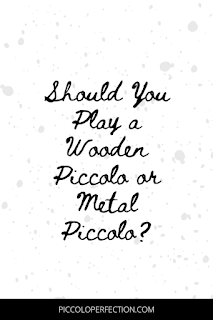Piccolo vs. Flute: What You Need to Know

Comparing the piccolo vs. flute may seem unnecessary. After all, they're both flutes, right? Well, yes, but there's more to the instruments than that. Be sure to consider the similarities and differences of the piccolo and flute. Then, you can know how to use them as a composer or performer. Before we get into the comparison, this post contains affiliate links. Click here to read the full disclosure policy. What Is the Flute? The flute is the main instrument of the western concert flute family. It's also the only member of that family that doesn't transpose in some way. Concert flutes play in the treble clef, and their range starts at middle C or the B just below. You can play up to the C three octaves above that or even higher. Flutes are common in orchestras and bands, and they're an excellent instrument to play. The instrument has a lot of existing repertoire, and it continues to grow each year. What Is the Piccolo? The piccolo is a member of the western conce...





